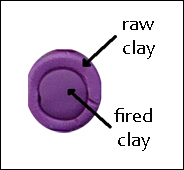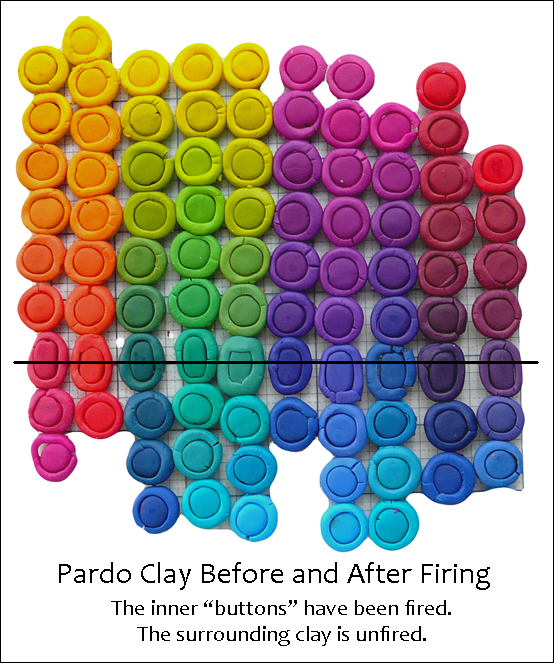Seeing is Believing
(Post revised 7/12/2012 in response to comments.) In my last post I showed blends of unfired Pardo Clay primaries. (If you haven’t read the previous post I suggest you read it before trying to understand this one. ) I told you I would fire the clay later to check for color shifts and report on the results in the next post. Here are the results.
 How I did the test: I punched small “buttons” of clay out of the unfired disks of clay and fired them according to the package directions. After they had cooled I replaced them in their original positions so that each fired center is surrounded by raw clay.
How I did the test: I punched small “buttons” of clay out of the unfired disks of clay and fired them according to the package directions. After they had cooled I replaced them in their original positions so that each fired center is surrounded by raw clay.
I thought you would be able to tell from the picture that very little color shifting occurred, but from the comments I’ve gotten here and on my Facebook page I’ve concluded I should describe what I see first hand.
A slight amount of darkening occurred but the amount is well within the range of what is acceptable to me. The buttons have a lovely matte finish while the outer, raw clay is shiny (therefore it reflects more light which might make it look a little brighter in the picture).
I can see I’m not through with this test. I’m going to have to sand and buff the buttons and put them back for another photograph. Another thing I might do is add a bit (1/12 part or so) white to each color and do the comparison over again. Adding a a small amount of white to most polymer clay colors makes them look a little brighter after firing, but that’s for another day. Can you tell I’m a scientist by training?

